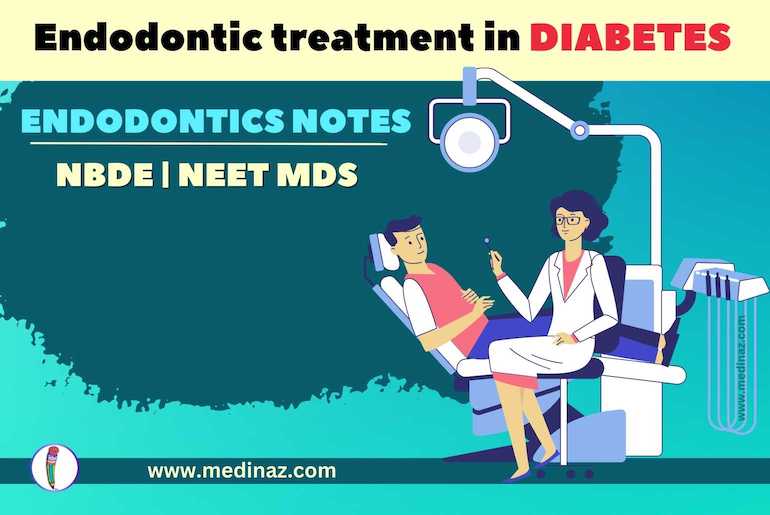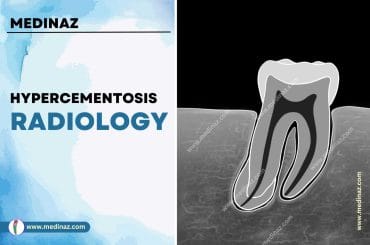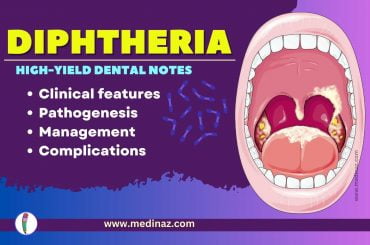Endodontic treatment in diabetes: How to approach endodontic treatment in diabetic patients.
Diabetes Prevalence:
- According to CDC, 25.8 million people (8.3% of the US population) had diabetes in 2011.
- 1.9 million people aged 20 years or older were newly diagnosed with diabetes in 2010.
Impact of Diabetes:
- Diabetes is the seventh leading cause of death in the US.
- People with diabetes have twice the risk of death compared to those without diabetes.
- Patients with diabetes requiring endodontic treatment are becoming increasingly common.
Pathophysiology of Diabetes:
- Insufficient insulin production or ineffective insulin utilization leads to elevated blood glucose levels.
- Type 1 diabetes: Autoimmune destruction of pancreatic beta cells results in little to no insulin production.
- Type 2 diabetes: Insulin resistance occurs, where cells become less responsive to the effects of insulin, leading to compensatory hyperinsulinemia. (ref)
- In both types, impaired glucose uptake by cells leads to increased hepatic glucose production and release into the bloodstream.
- Hyperglycemia stimulates the release of glucagon, further promoting hepatic glucose production.
- Increased blood glucose levels contribute to osmotic diuresis, causing polyuria (excessive urination) and subsequent polydipsia (excessive thirst).
- Loss of glucose in urine leads to glycosuria, further contributing to fluid and electrolyte imbalances.
- Lipolysis is enhanced, leading to increased fatty acid release and subsequent ketone production, which can result in diabetic ketoacidosis in type 1 diabetes.
- Chronic hyperglycemia causes advanced glycation end products (AGEs) formation, contributing to tissue damage and diabetic complications in various organs.
Considerations for Endodontic Treatment in Diabetic Patients:
- Well-controlled diabetes without serious complications makes a patient a candidate for endodontic treatment.
- Special considerations apply during acute infections.
- Non-insulin-controlled patients may require insulin adjustments.
- Surgical procedures may require consultation with the patient’s physician to adjust insulin dosage, antibiotic prophylaxis, and post-treatment diet.
Glucose Monitoring and Hypoglycemia:
- Patients who self-monitor glucose levels should bring a glucometer to each visit.
- If pretreatment glucose levels are below normal fasting range, a carbohydrate source may be appropriate.
- Signs of hypoglycemia include confusion, tremors, agitation, diaphoresis, and tachycardia.
- Clinicians should obtain accurate insulin and meal history and consult the patient’s physician if necessary.
Dental Treatment Planning:
- Well-managed diabetic patients without serious complications can receive any necessary dental treatment.
- Patients with serious medical complications may require a modified treatment plan.
- Prophylactic antibiotics may be prescribed for patients with difficult-to-control diabetes and invasive procedures.
- Local anesthesia is generally safe, but caution should be exercised for patients with concurrent hypertension, recent myocardial infarction, or cardiac arrhythmia.
Impact on Endodontic Treatment:
- Inadequate diabetic control may increase the risk of oral infections, including dental pulp infection.
- The success of endodontic treatment may be influenced by diabetes, particularly in cases with pretreatment periradicular lesions.
- Patients with diabetes and other systemic diseases may benefit from referral to an endodontist for treatment planning.
You may also like these Free Notes
A Visual Learning Platform





